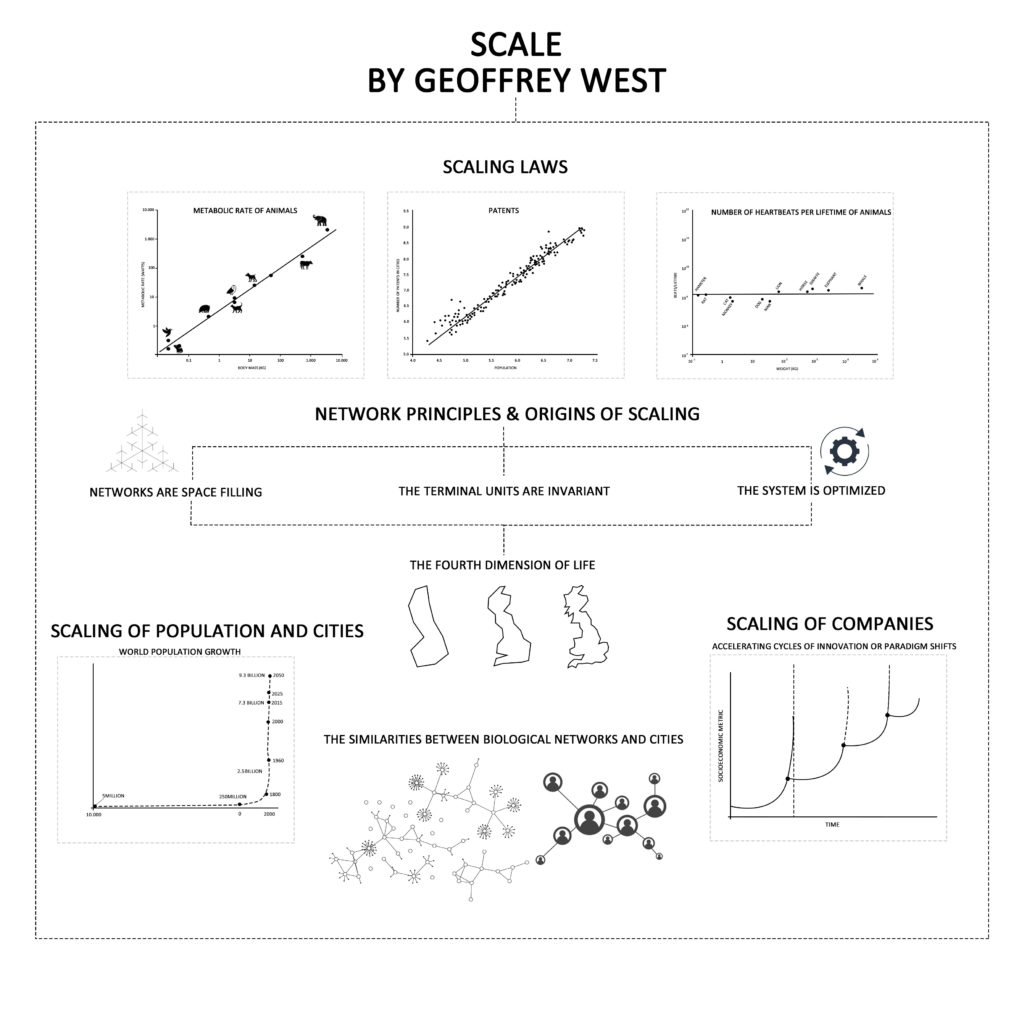Exploring the Fundamentals of Scaling Laws with Geoffrey West’s Scale
Geoffrey West’s book, Scale, explores the fundamental principles that govern complex systems in the naturalworld, including organisms, ecosystems, cities, and companies. The book argues that these systems exhibit predictable patterns of behaviour as they grow and scale, which can be explained by a few simple scaling laws.
One of the central themes of the book is the idea that as systems grow in size, they tend to become more efficient and innovative, but also more vulnerable to systemic risks and disruptions. West illustrates this principle by examining how metabolic rate scales with body size in living organisms, and how this power law applies across different species. He also shows how cities and companies exhibit similar patterns of behaviour, such as the scaling of transportation network density with city size.
West’s insights into scaling laws are not limited to biological and urban systems, but also extend to human societies and economies. He argues that by understanding the interplay between network structures, energy flows, and the demands of transportation and communication, we can develop more effective strategies for managing complex systems.
Moreover, the book suggests that these scaling laws favour certain types of systems over others, and that the most successful systems are those that balance efficiency and innovation with resilience and adaptability. West warns that as systems become more complex and interconnected, they become more susceptible to catastrophic collapse, and argues that a more holistic and interdisciplinary approach to problem-solving is needed to address the challenges facing humanity today.
Overall, Scale offers a compelling and insightful perspective on the principles that underlie complex systems in the natural and human world. By providing a new framework for understanding scaling laws, West encourages us to think more deeply about the challenges facing our societies and economies, and to develop innovative strategies for managing them.


